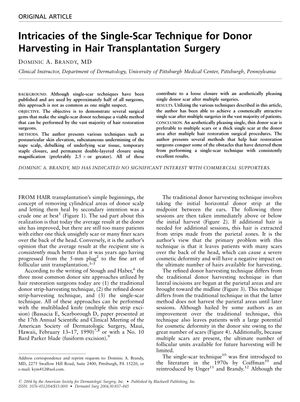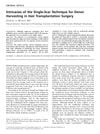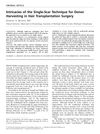Commentary
June 2004
in “
Dermatologic Surgery
”

TLDR The commentary suggests that using a single-scar technique for hair transplants can give good cosmetic results, but some surgeons hesitate to use it despite ways to address their concerns.
In the 2004 commentary, Dominic A. Brandy, MD, discussed the benefits of the single-scar technique for donor harvesting in hair transplantation surgery, which was practiced by about half of all surgeons at the time. Brandy outlined surgical techniques to achieve a cosmetically attractive single scar, including postauricular skin elevation, subcutaneous undermining, debulking of scar tissue, and meticulous closure methods. However, many surgeons were reluctant to adopt this method due to concerns about added time, unfamiliar anatomy, uncomfortable positioning, and fear of undermining. Brandy argued these concerns could be overcome with proper techniques and tools. Walter Unger, MD, contributed to the commentary by advocating for the use of narrower donor strips to prevent wide scars, suggesting that narrower strips reduce the need for complex surgical techniques and can lead to better healing and less postoperative pain. Unger agreed with Brandy's approach if wider strips were used but preferred narrower strips to simplify the procedure and improve outcomes. The number of patients involved in the study or the specific results were not mentioned in the commentary.





